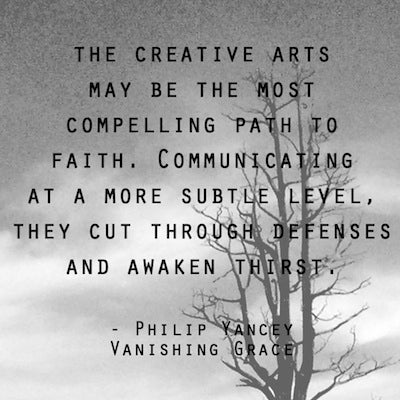Much as I admire activists, I am not one. Most days I sit alone in my home office staring at a computer screen while pressing plastic keys that make an insect-click sound.
This used to bother me. I once wrote an article titled “They Also Serve Who Only Sit and Click,” comparing my routine with my social worker wife’s. At dinner each evening she would recount her visits to bed-bound senior citizens and the meals she organized for the homeless. “What about your day?” she would ask, and usually I had to rack my brain to come up with something worth mentioning. Not much happens in a writer’s day: the mailman comes, I get a letter from a reader, I find a good adverb.
When I travel on assignment I meet activists who roll up their sleeves and tackle major problems. They lift my faith and remind me of the important work of the kingdom. Once again, though, I play a vicarious role by writing about them. While they work on the front lines, I spend my time moving electrons around on a computer screen, ordering them into words and sentences in hopes that someday they will connect with someone.
On a trip to Lebanon in 1998 I met a woman who said she had read my book Disappointment with God during the Lebanese civil war. She kept it in a basement bomb shelter. When the artillery fire intensified around her high-rise apartment building, she would make her way down the darkened stairway, light a candle or a kerosene lantern, and read my book.
I cannot describe how humbling it was for me to hear that when Christians were dying because of their faith, when the most beautiful city of the Middle East was being reduced to rubble, at that moment words I wrote from my apartment in Chicago somehow brought her comfort.
On the same trip another woman told me that my book about grace helped her have a better attitude toward the Palestinian guerrillas who had confiscated her apartment and forced her out. “What really upset me was that they made me keep paying the utility bills!” she said. I hung my head, for when I wrote that book I was thinking of neighbors who play loud music or let their dogs run loose, not guerrillas who move in uninvited. So often I feel a disconnect between what I write about in seclusion and the ways in which others apply those words in the real world. Only with difficulty (and age) have I learned to accept a role behind the frontlines, truly believing that we also serve who only sit and click.
Most of my writing centers on topics of interest to readers who share my faith. I have friends, though, who labor for years over a novel or a film that they hope will influence the broader culture, and then abandon it because they cannot find a willing film distributor or book publisher. Have I wasted my time? they wonder. To make a living by creating, whether it involves books or films or visual arts, is a lonely enterprise fraught with risk.
Yet in modern times, and especially for post-Christians, the creative arts may be the most compelling path to faith.
Communicating at a more subtle level, they cut through defenses and awaken thirst. Someone who would never think of attending church will visit an art museum or watch a movie or play. To mention just one example, Peter Hitchens, brother of the atheist Christopher, credits a five-hundred-year-old painting of The Last Judgment with stirring his return to faith. Staring at the painting, its naked figures stripped of their time-bound fashions, gave him a sudden sense of religion being a thing of the present and not just the past. He felt a proper and holy fear of a world beyond that sits in judgment on this one.
One year I attended a musical called The Mysteries in London’s West End. A South African troupe had taken the form of the old medieval mystery plays and culturally adapted it. The play began, like the Bible, with Adam and Eve, a male and a female actor standing stark naked on a blank stage. Then came Noah, Abraham, Joseph, Moses, David and many others acting out the plot of the biblical story, all the way to Jesus. The actors sang in five different languages, accompanied by musicians who beat on tires, oil drums, and garbage can lids rather than musical instruments. In their version, Afrikaner policemen, not Roman soldiers, were the ones who crucified Jesus. At the end of the play the secular and sophisticated London audience leaped to their feet after the joyous resurrection scene. The cycle was complete, I thought as I looked around at theatergoers waving handkerchiefs and shouting “Bravo!” British missionaries had carried the gospel to South Africa. Now Africans were bringing it back, wrapped in their own cultural terms, to people who had mostly forgotten it.
The arts have become a pulpit for culture at large, one too often neglected by people of faith. N. T. Wright says that the arts “are highways into the center of a reality which cannot be glimpsed, let alone grasped, any other way.” Joseph Ratzinger, who later became Pope Benedict XVI, goes further: “The only really effective apologia for Christianity comes down to two arguments, namely, the saints the Church has produced and the art which has grown in her womb.”
Excerpted from Vanishing Grace by Philip Yancey, copyright Zondervan, 2014.
* * *
Your Turn
Have you had the experience of appreciating art, poetry, writing, film, or other creative art and felt God in the midst of it? How has God spoken to you through art? How has He comforted or inspired you in a medium of artistic expression? Come join the conversation on our blog! We would love to hear from you! ~ Devotionals Daily

